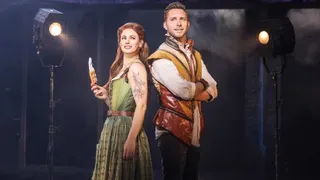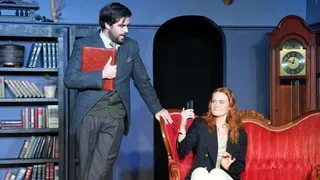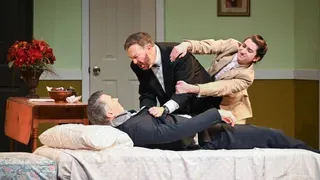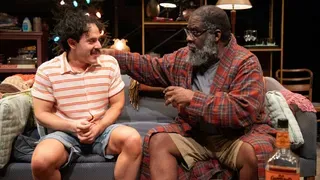March 27, 2015
The Wrecking Crew
Tony Pinizzotto READ TIME: 3 MIN.
Tune into your favorite "oldies" streaming radio station; pull out your old vinyl records; or even select classic Rock N' Roll genre in your 10,000 song MP3 player and it's quite likely that you've been listening to the best assembled set of studio musicians in American Music history: "The Wrecking Crew." This group of never-before-acknowledged and nameless musicians are the subject of the fascinating new documentary of the same name.
A love letter nineteen years in the making from producer Denny Tedesco to his father, studio guitarist Tommy Tedesco, "The Wrecking Crew" will take what you have come to know as the classic Rock N' Roll you've grown up with and figuratively pull the recording studio rug out from under you. You see, for many years (roughly the very late 1950s into the early 1970s), an extensive portion of many of the most famous musicians and musical group's hit songs were actually recorded in a studio with the same group of 30-75 musicians -- a "ringer" group (for less of a better term) hired to come into a varying array of Los Angeles' top recording studios and lay down the musical arrangements on the albums.
"The Wrecking Crew" backed a seemingly endless list of talents: Frank and Nancy Sinatra, Dean Martin, The Beach Boys, The Monkees, Nat "King" Cole, The Platters, Sonny & Cher, Elvis Presley, The Mamas And The Poppas, The Byrds, Simon & Garfunkel and countless more. Phil Spector's "Wall of Sound" was created by "The Wrecking Crew" at any one of LA's top studios, like the basement in Capitol Records or Gold Coast Records. They all shared one thing -- the best assembled group of studio musicians in the industry.
Among them: Tommy Tedesco (guitar); Earl Palmer and Hal Blaine (drums); Ray Pohlman (guitar); Don Randi (keyboards); standout Carol Kaye (bass guitar); an as-yet undiscovered Glen Campbell. Because these musicians (until now) have never been album credited, the total number of recordings they fabricated is unknown -- but it's believed to be in the several thousands.
This was the real birth of Rock N' Roll. "The Wrecking Crew" got their moniker because in those days they were the "hip cats invading the studios where the blue jacket jazz musicians thrived" and were there to "wreck the music business" with their new-fangled Rock N' Roll. This was "the business" for these professionals in the 1960s. They would sometimes get scheduled for three or four sessions a day at different studios, spanning the Los Angeles and San Fernando Valley. To them it was a paycheck, a way to feed their family. "The Wrecking Crew" does a wonderful job focusing on the constant struggle for theses ear-popping artists between staying happy as working musicians and balancing out failed marriages, as well as less-than-desired family lives.
When these unknown greats would enter the studio they'd be handed a bare-bones skeleton of a song structure; they would then proceed to pull musical rabbits out of their hats by giving that skeleton life, and a heart, through their musical talents. Tedesco's documentary gives us a wonderful first-hand account of just how prolific "The Wrecking Crew" was, and just why they weren't acknowledged properly in the studio industry to many groups' adoring fans.
"The Wrecking Crew" is chock full of interviews with its troupe, many of whom have now passed away, including Denny Tedesco's father. The soundtrack to the film will make your heart race and your feet tap. It's astounding. There are also some wonderful archival footage sequences, along with great snapshot photos of many of these musicians in the studio with their credit-taking stars. The only drawback of the film is that when Tedesco began his video research and interviews, many of the actual interviews were recorded in SD vs. HD. This is a small price to pay next to the paramount reason for telling his story.
Most notable in the group is female bassist Carol Kaye. Pummeling boundaries as one of the only female members of the group, Kaye battled a higher level of challenge because she was a rarity. Kaye single-handedly wrote the ear-worm walking bass line for songs like "The Beat Goes On" and the "Mission Impossible theme." just to name a few. A the time, Kaye was one of the highest paid female studio musicians in the country. Today, she's practically an unknown.
"The Wrecking Crew" is a story that needs to be told. It celebrates the love of music and performing it. It's documentary that finally gives musical credit, where musical credit is due.
"The Wrecking Crew" from Magnolia Pictures
In Theaters, On Demand, iTunes
http://www.wreckingcrewfilm.com







